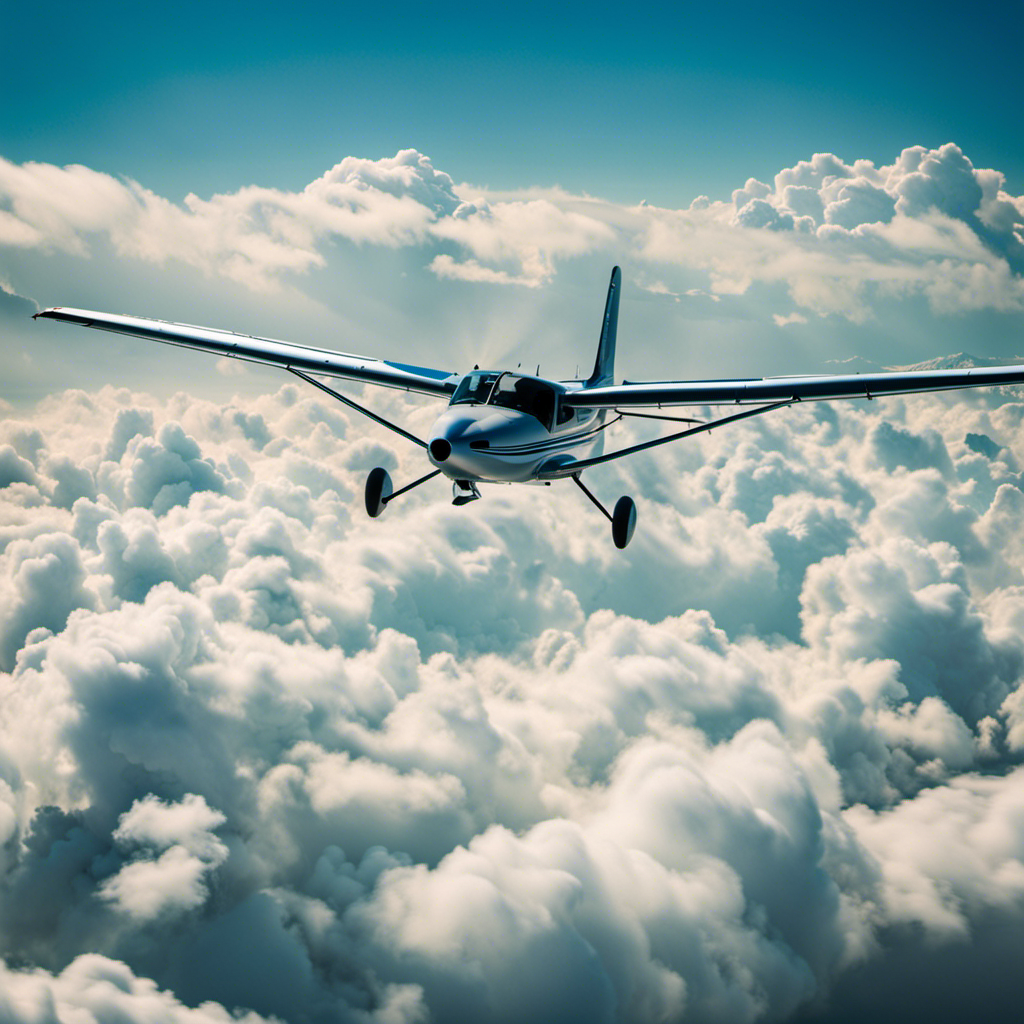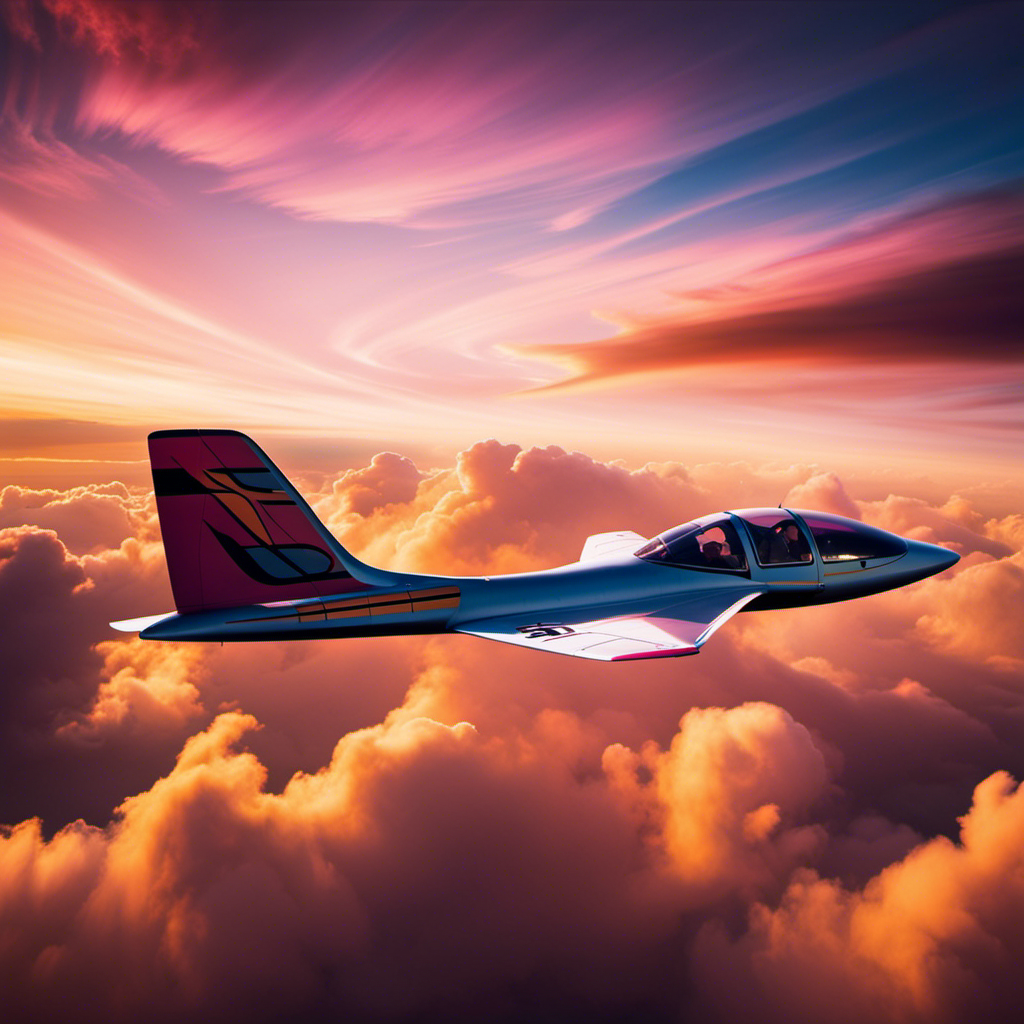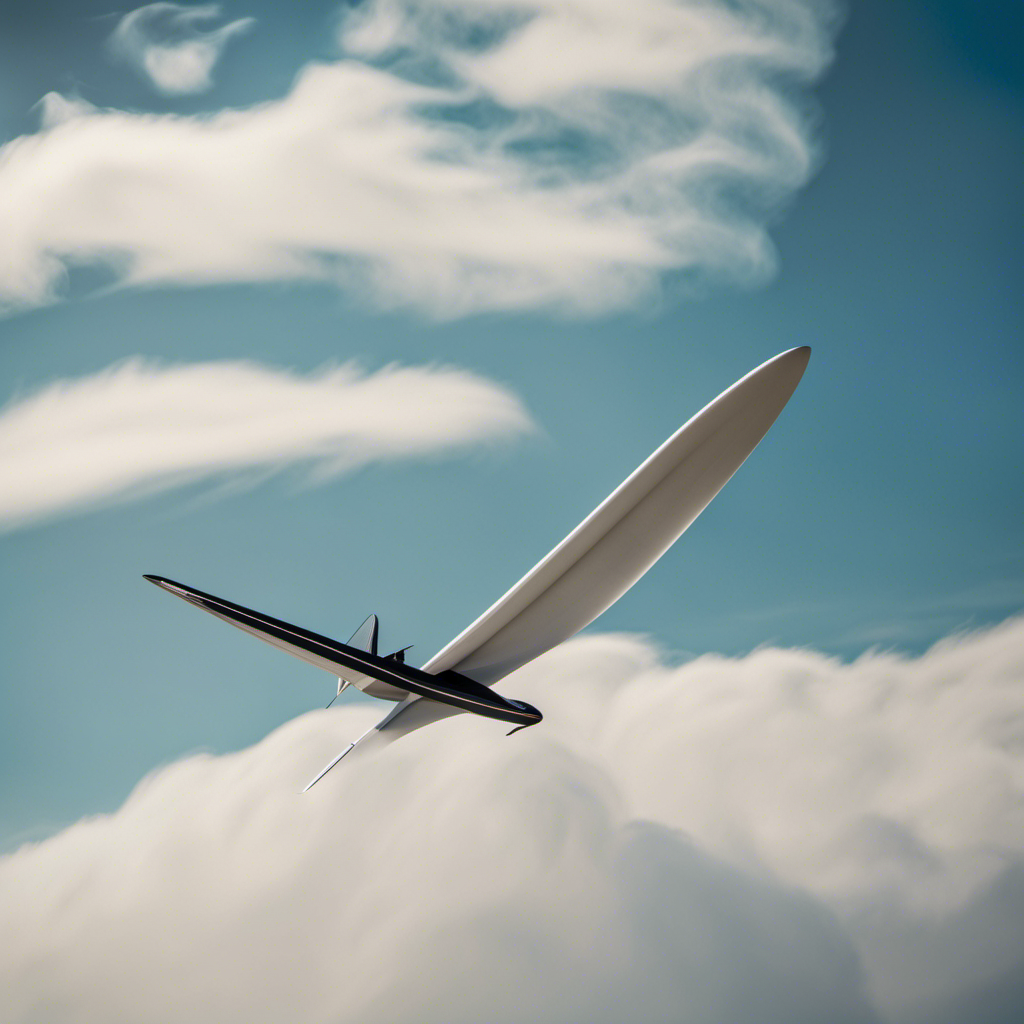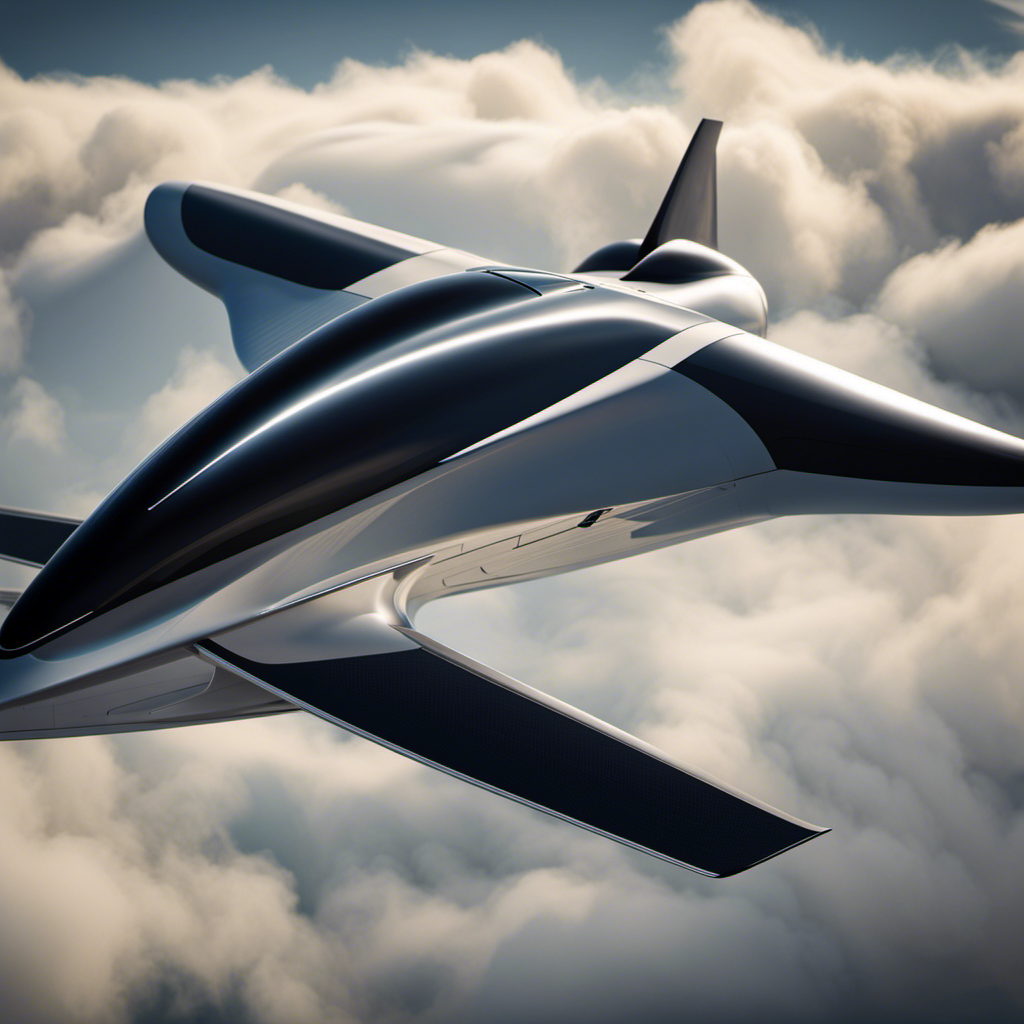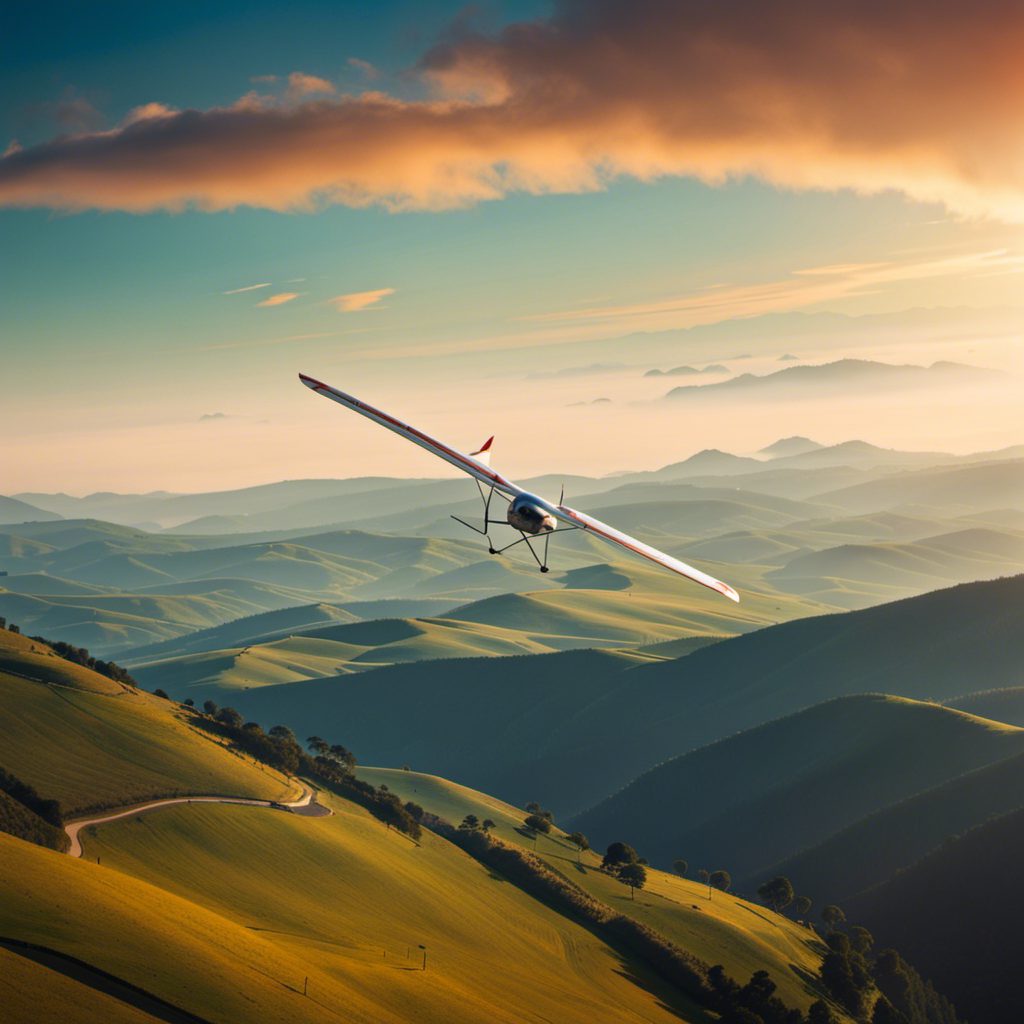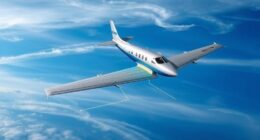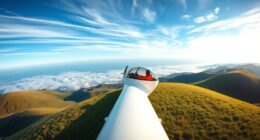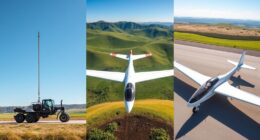As a glider pilot, I have enjoyed the excitement of flying without an engine, soaring through the skies. In this article, I will share valuable advice and tips from experienced glider pilots to help you master launching, handling extended flights, and performing advanced flying maneuvers.
We’ll delve into understanding thermals and soaring techniques, analyzing weather for safe decision making, and implementing safety precautions and emergency procedures.
Get ready to soar to new heights with the guidance of the experts.
Key Takeaways
- Regular cleaning and inspections are crucial for the appearance and safety of the glider.
- Training and certification programs provide the necessary knowledge and skills for safe glider operation.
- Connecting with the glider pilot community offers valuable connections and mentorship opportunities.
- Regular inspections and prompt repairs ensure the glider is in good condition for flight.
Mastering Take-Offs and Landings
To improve your skills in mastering take-offs and landings, you’ll need to focus on maintaining proper speed and angle of approach. One crucial aspect of this is ensuring that your glider is in optimal condition through regular glider maintenance and pre-flight checks.
Before each flight, it’s essential to inspect the aircraft thoroughly, checking for any signs of damage or wear that could affect its performance. This includes examining the control surfaces, inspecting the canopy, and checking the landing gear. By conducting these pre-flight checks diligently, you can identify and address any potential issues before they become safety concerns.
Additionally, it’s important to familiarize yourself with the recommended take-off and landing speeds for your specific glider model. Understanding the proper speed and angle of approach will help you execute smooth and controlled take-offs and landings.
Now, let’s move on to understanding thermals and soaring techniques.
Understanding Thermals and Soaring Techniques
Understanding thermals and soaring techniques will help you maximize your gliding experience.
Thermals are columns of rising air that form due to temperature differences in the atmosphere. However, thermal variability can make it challenging to locate and utilize them effectively.
To make the most of thermals, glider pilots employ various soaring techniques. One such technique is circling within the thermal, gradually ascending to higher altitudes. By maintaining a constant angle of bank and adjusting the circle’s radius, pilots can stay within the thermal and gain altitude.
Another technique is using ridge lift, which occurs when wind hits a slope and rises. Glider pilots can glide along the ridge to gain altitude without the need for thermals.
Understanding these techniques and the factors affecting thermal variability is crucial for successful soaring.
Now, let’s explore how to navigate cross-country flights without the need for engine power.
Navigating Cross-Country Flights
Navigating cross-country flights without engine power requires careful planning and strategic decision-making. Cross-country planning begins with selecting a suitable route that takes advantage of natural features like ridges and valleys that can provide lift.
Navigation techniques are crucial for staying on track during the flight. Glider pilots use a combination of visual landmarks, GPS technology, and maps to ensure they stay on course. They also consider wind direction and speed to optimize their route and make adjustments as needed.
Weather analysis and decision making play a significant role in cross-country flights. Pilots must evaluate weather conditions, such as cloud cover, temperature, and wind patterns, to determine if it’s safe and feasible to continue the flight. By analyzing the weather, pilots can make informed decisions about when to take off, when to land, and when to modify their route.
Weather Analysis and Decision Making
Assessing weather conditions is crucial for making informed decisions about when to take off, where to land, and how to adjust your route during cross-country flights. Weather forecasting plays a vital role in ensuring the safety of pilots and their passengers. As a glider pilot, I rely on accurate weather predictions to plan my flights and avoid unfavorable conditions. Flying in different seasons requires careful consideration of the weather patterns unique to each time of year. To give you a better understanding, here is a table summarizing the key weather factors to consider when flying in different seasons:
| Season | Weather Factors | Considerations |
|---|---|---|
| Spring | Rain showers | Potential for turbulence |
| Summer | Thunderstorms | Watch out for updrafts |
| Fall | Changing winds | Be prepared for gusts |
| Winter | Cold temperatures | Ensure proper insulation |
Safety Precautions and Emergency Procedures
To ensure the safety of everyone on board, it’s important to be aware of the necessary safety precautions and emergency procedures while flying.
Before taking off, it’s crucial to familiarize yourself with the emergency equipment on board, such as the fire extinguisher, first aid kit, and emergency exits.
In the event of an emergency landing, remain calm and follow the instructions of the pilot or flight attendants. Brace for impact by assuming the brace position, and be prepared to evacuate the aircraft quickly and efficiently.
By knowing these procedures and being prepared, you can help ensure the safety of yourself and others in the event of an emergency.
Now, let’s move on to improving glide performance and efficiency.
Improving Glide Performance and Efficiency
After learning about safety precautions and emergency procedures, it’s time to focus on improving glide performance and efficiency.
One technique that can greatly enhance your gliding experience is ridge soaring. This involves utilizing the upward air currents created by the wind hitting a ridge or hill. By skillfully maneuvering your glider along the ridge, you can maintain altitude and cover long distances without the need for a motor.
Another important aspect to consider is weight shift. By shifting your body weight inside the cockpit, you can control the glider’s pitch and bank angles, allowing for precise turns and adjustments.
Mastering these techniques will not only increase your glide performance but also give you a deeper understanding of the dynamics of flight.
Now, let’s explore the exciting realm of advanced maneuvers and aerobatics.
Advanced Maneuvers and Aerobatics
Now let’s delve into the exhilarating world of advanced maneuvers and aerobatics!
Glider pilots who have mastered the basics can explore a whole new level of excitement and skill by learning advanced maneuvers. These maneuvers include loops, rolls, spins, and stalls, which allow pilots to push the limits of their gliders and their own abilities. Performing aerobatics not only adds a thrilling element to flying but also helps pilots develop precise control and coordination.
It is important, however, to remember that aerobatics should only be attempted by pilots who have received proper training and have a thorough understanding of their glider’s capabilities. Safety should always be the top priority.
Now, let’s transition to the next section about maintenance and care for your glider.
Maintenance and Care for Your Glider
Make sure you regularly clean and inspect your glider to ensure its longevity and optimal performance. Glider maintenance is crucial for safe and enjoyable flights. Here are some key aspects to consider:
-
Regular cleaning: Keeping your glider clean not only improves its appearance but also helps prevent damage caused by dirt and debris.
-
Inspections: Conduct thorough inspections before and after each flight to identify any signs of wear and tear, such as frayed cables or loose bolts.
-
Prompt repairs: Address any issues promptly to prevent them from worsening and potentially compromising your safety.
Taking care of your glider shows your commitment to its well-being and ensures that it remains in top condition for years to come. By practicing regular maintenance and addressing repairs promptly, you can enjoy worry-free flights and peace of mind.
Transitioning into the next section about training and certification programs, it is essential to have a solid foundation of knowledge and skills to safely operate a glider.
Training and Certification Programs
To safely operate a glider, it’s important to enroll in training and certification programs that provide you with the necessary knowledge and skills. Simulator training is an essential component of these programs, allowing you to practice flying in a controlled environment before taking to the skies. This helps you develop your flying techniques and familiarize yourself with the controls and instruments of a glider.
When selecting an instructor, choose someone who is experienced, knowledgeable, and certified by a recognized aviation authority. They will guide you through the training process, teaching you the necessary skills and ensuring you meet the requirements for certification.
Connecting with the Glider Pilot Community
Connecting with the glider pilot community is a great way to enhance your skills and expand your knowledge. By joining online forums and attending glider pilot meetups, you can connect with experienced pilots, discuss techniques, and learn from their experiences. These platforms offer a wealth of information, allowing you to ask questions, share insights, and gain valuable tips and advice. To give you an idea of what you can expect, here is a table showcasing some popular online forums and glider pilot meetups:
| Online Forums | Glider Pilot Meetups |
|---|---|
| GliderForum | Soaring Society of America Annual Convention |
| GliderPilots | Great Lakes Glider Council Gathering |
| GliderSource | British Gliding Association National Rally |
| Sailplane Talk | European Gliding Championships |
Participating in these communities can provide you with valuable connections, mentorship opportunities, and a supportive network of fellow glider pilots. So don’t miss out on the chance to engage with the glider pilot community and take your skills to new heights.
Frequently Asked Questions
What are the different types of gliders available in the market?
There are various types of gliders available on the market, each with its own unique design features. These include standard gliders, high-performance gliders, motorized gliders, and aerobatic gliders. Each type offers different capabilities and features to suit different flying preferences.
How does the weight of the pilot affect the performance of the glider?
The weight of the pilot affects glider performance significantly. Weight distribution is crucial in glider flying, as a heavier pilot may reduce the glider’s maneuverability and increase stall speed. Interestingly, a 10% increase in pilot weight can reduce glide ratio by 4%.
Are there any specific age restrictions for glider pilots?
There are no specific age restrictions for glider pilots, but safety precautions are important for all pilots. It is crucial to ensure that pilots have the necessary physical and mental capabilities to safely operate a glider.
Can gliders be flown at night?
Flying gliders at night requires special safety precautions, such as installing proper lighting and using night flying techniques. Navigation becomes challenging, like trying to find your way through a pitch-black maze.
What are the typical costs associated with owning and maintaining a glider?
Glider insurance and annual inspections are typical costs associated with owning and maintaining a glider. It’s important to budget for these expenses to ensure the safety and longevity of your aircraft.
Conclusion
In conclusion, glider piloting is a thrilling and challenging sport that requires a combination of skill, knowledge, and experience. By mastering take-offs and landings, understanding thermals and soaring techniques, and learning to navigate cross-country flights, pilots can truly soar to new heights.
Weather analysis and decision making, along with safety precautions and emergency procedures, are vital for ensuring a safe and enjoyable flight. For those looking to take their skills to the next level, advanced maneuvers and aerobatics can provide an exhilarating challenge. In addition, proper maintenance and care for your glider is essential for its longevity and performance.
Finally, training and certification programs help pilots develop the necessary skills and knowledge for a successful career in glider piloting. By connecting with the glider pilot community, pilots can share experiences, learn from others, and foster a sense of camaraderie. So, whether you’re a beginner or an experienced pilot, glider piloting offers endless opportunities for growth and adventure.
